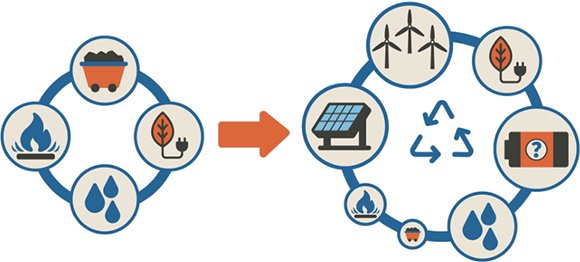Emerging Technologies in Power System Planning
- July 17, 2023
- Annika Roberts
It is almost a given at this point that the current energy landscape looks different than ever before and is continuing to develop and evolve at a rapid pace. The 2021 Plan saw an unprecedented number of renewable resources built, driven by low costs and a regional commitment to greenhouse gas emission reductions. This changing grid demands new resources and technologies to keep the system –with its influx of weather-dependent, intermittent resources –reliable and adequate.
The Council is tasked with prioritizing cost-effective resources. As part of being cost-effective a resource must be reliable and available within the time period of interest. It is prudent for all planners to consider the potential opportunity of technologies that are “emerging” and might provide value to the system down the road. In the 2021 Power Plan, the Council explored several emerging technologies, both on the supply and demand side, and analyzed the potential role a generic emissions free emerging technology might play in the power system. The Council also recognized the importance of continued investment in advancing emerging technologies to provide options into the future as loads grow and policy goals become more challenging to meet with existing resources.

At July’s Council meeting, staff gave two presentations focused on this concept of emerging technologies. The first aimed to provide broader context around the power system’s needs and the resource attributes that might fit those needs going forward. As the Council assesses new technologies to consider in its planning, understanding these attributes and how they fit the system needs will be critical. They will have to weigh considerations such as
- Is the fuel available on call, or available when other fuels are not?
- Is the resource leveraging existing infrastructure or deferring costly transmission investments?
- Does the resource qualify as non-emitting or allow for less curtailment of non-emitting resources?
These added values necessitate a shift in the way energy planners think about energy resources as the grid has new, complex, and interrelated needs to be met and different costs and benefits to be weighed. A key highlight from this discussion was recognizing the importance of storage to the system.
To this point, the second presentation was a deep dive into utility scale storage, and battery storage in particular. Staff are watching these emerging technologies closely, in collaboration with the region, as they consider which are the most viable future resources to be analyzed in the next plan. As the power system transitions, storage resources fulfill many of the needs described above, including facilitating system flexibility and filling in the gaps of intermittent resources to ensure reliability without overloading transmission. Both regional utility IRPs and state/national energy policy have acknowledged the important role storage will need to play in the country’s energy transition and are devoting considerable resources into further development.
With increased funding coming from the administration’s landmark energy bills, the Inflation Reduction Act and Bipartisan Infrastructure Law, pilots and demonstration projects being spearheaded by national labs, academic institutions, and utilities alike, and a general groundswell of energy and interest, batteries are poised to play a greater role in the region’s electric mix than they have historically. This includes technologies currently on the market, namely lithium-ion batteries, but will also likely involve new and emerging battery technologies like iron-air, sodium-ion, lithium-sulfur etc., that can better fulfill the needs of the energy grid as they continue to evolve. Staff will continue to track these technologies as well as the needs they fill as they mature, in eventual service of developing resources for a future Plan.



